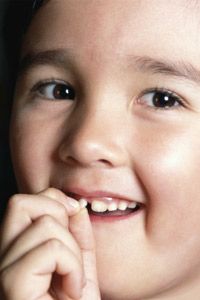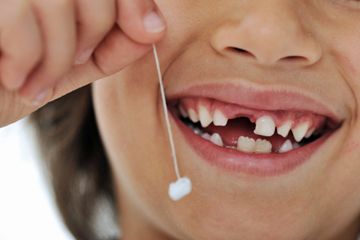Teething is a trying time for both parents and kids alike, but by age 3, most children have all 20 of their primary teeth. However, you only have about three years or so without much tooth-related drama. Those teeth that may have caused your child so much pain and suffering as they were coming in -- and so much stress for you -- are called "baby teeth" for a reason.
Around the age of 6, they start to fall out to make way for permanent adult teeth. Sometimes kids lose baby teeth too early due to decay or some other reason, but this can lead to the permanent tooth coming in too soon and cause spacing issues later on (so keep brushing and flossing). Baby teeth usually fall out in the order that they come in, so the bottom two teeth will be the first to go, followed by the top two. There's not much rhyme or reason to the timing, but they should all be gone by age 13.
Advertisement
Some kids get excited about losing teeth, especially if you're going the tooth fairy route and they've heard from other kids about finding money under their pillows. Others might be afraid that losing a tooth will hurt or that there will be blood. Losing baby teeth is a far less painful process than getting them in, but it can still be a challenge -- especially if a loose tooth seems to be hanging on forever. It's best to let the tooth come out on its own because baby teeth usually come out right before the permanent tooth is ready to come in. That's the theory, anyway, but it can be difficult to follow in practice.
Find out next how to remove that loose tooth with a minimum of pain and effort.
Advertisement



